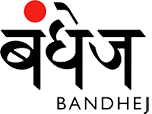
HANDCRAFTED, Sustainable Fashion
Currency

Miniya kaam: WAX PRINTING
In the 18th and 19th centuries, the East India Company used to export large quantities of wax-printed fabrics from this region. Traders in Bhuj procured the orders and the production was farmed out to small printing units in Bhojpur, Mundra, Anjar and within Bhuj in Kutch.
 |
 |
Today, there are only a handful of wax-printing workshops in Mundra and Bhujpur practising this craft. Ayub Haji Musa Khatri’s workshop on the outskirts of Mundra has 4 printing tables, and a staff of 15, printers, dyers and washers. Ayubbhai remembers six generations of his family living and working in Mundra, an ancient port town, 55 km from Bhuj.
The district of Mundra today is the most industrialized and polluted region in Kutch. After the earthquake of 2001, the government announced many tax incentive schemes to encourage industries to set up their operations in Kutch. Mundra, the only district that was not devastated by the earthquake, become a Special Industrial Zone with the first private port, the Gujarat Adani Port Limited. There are three major thermal power plants coming up, as well as innumerable industries, making it the most polluted region in Kutch. Effluent is dumped in the sea, and the environment is engulfed in smoke and pollution destroying the mangroves along the coastline.
In the past, Ayubbhai’s family printed sadla for the Vania, Kanebi, Harijan and Vaghari communities, odhani for the Khatri women and rumalfor their men. The wax was boiled with castor oil to make it soft, and the body of the fabric was often splashed with random dots. The piece was then dyed black. Those days only natural dyes were used, and the colour palette was limited to red, black and indigo. They had a few basic blocks which they used in various permutations and combinations to create a different surface for each community.
 |
 |
I was fascinated to see that not much had changed in their printing process, except that chemical dyes had replaced the traditional vegetable colours. The basic grey cotton fabric is cut to required lengths and soaked in water for two days to remove the natural gum and impurities in the fabric. This is washed, dried and prepared for printing. Even today, the printer works sitting on the ground, with a small table in front of him. In the past khakhan (pillu oil) was used as a resist. When boiled, this oil turns into a very soft resist-paste, the consistency of thick wax.
Subsequently, beeswax mixed with castor oil was used as a resist-paste. Today, paraffin wax is preferred as it is cheaper and easier to use than beeswax. Once the printer has finished printing the fabric surface in front of him, he keeps pulling it on the other side, to expose a fresh area of the fabric, and the process is repeated till the whole piece is printed. The printed fabric is then ready for dyeing. It is crushed to create the ‘cracked’ texture that is preferred by the customers today as this gives it a batik look.
The local communities have stopped using this fabric and the few surviving printers print for urban market. They have added a variety of new blocks and a new range of soft colours. Ayubbhai has reverted to the use of natural, eco-friendly dyes as there is a growing demand for these fabrics. Clearly, if there is a demand, the handcrafted production will continue.










